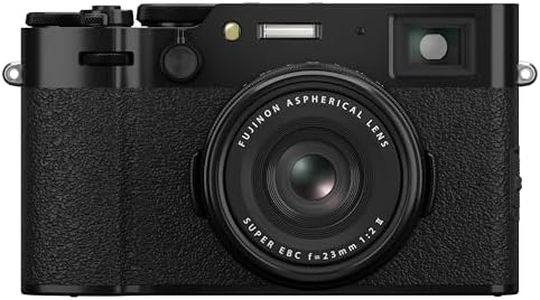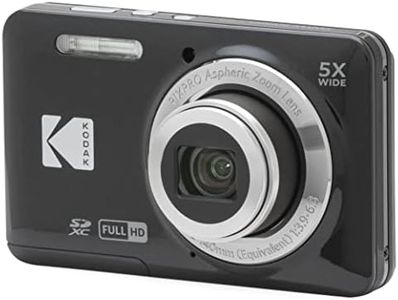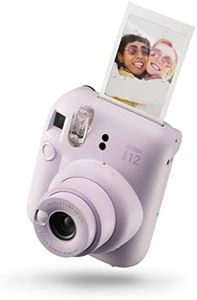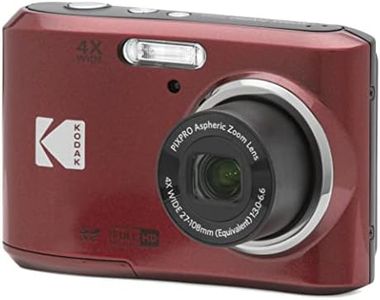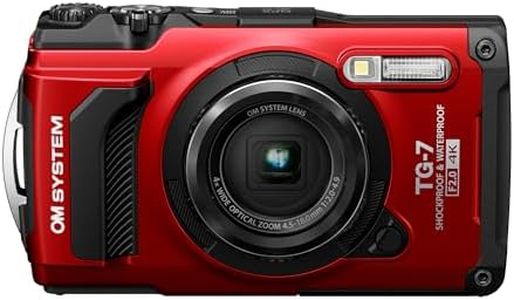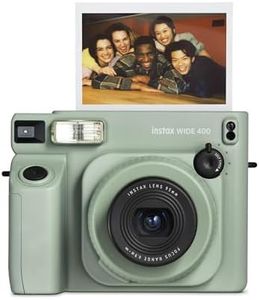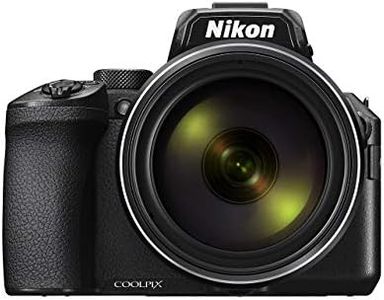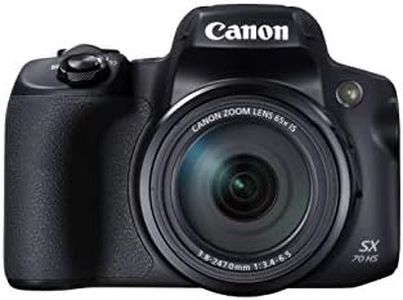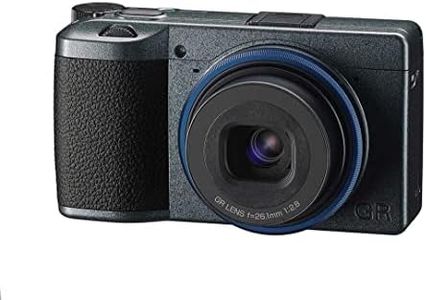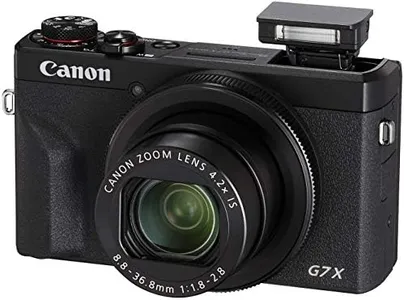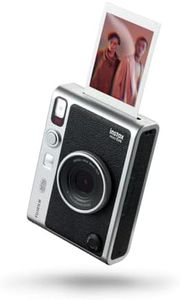We Use CookiesWe use cookies to enhance the security, performance,
functionality and for analytical and promotional activities. By continuing to browse this site you
are agreeing to our privacy policy
10 Best Point And Shoot Camera
From leading brands and best sellers available on the web.#10
Buying Guide for the Best Point And Shoot Camera
Picking the right point-and-shoot camera is all about matching your photography needs with the camera’s features. These cameras are designed for easy use and portability, making them great for casual users, travelers, or anyone who wants to capture moments without fussing over complicated settings. To find the best fit, consider which features matter the most for the type of photos you want to take — whether it’s family gatherings, scenic landscapes, or travel snapshots. Understanding the key specs will help you navigate the many options and make an informed choice.Sensor SizeThe sensor in a camera captures light and turns it into a photo, so its size heavily influences image quality. Larger sensors can capture more light, providing sharper images, better low-light performance, and more background blur for portraits. Sensor sizes in point-and-shoot cameras range from small (like 1/2.3-inch) to larger (such as 1-inch). Smaller sensors generally mean compact cameras with more zoom, but the image quality is lower, especially in dim lighting. Cameras with bigger sensors are often a bit bulkier but excel at producing clearer, richer photos. Consider your needs—if you mainly shoot in daylight or just want snapshots, a smaller sensor is fine; for higher-quality images or better results indoors, a bigger sensor is worth it.
Zoom RangeThe zoom is how much closer you can bring distant subjects in your photo without moving yourself. Zoom is usually described by its 'optical zoom' value (like 5x or 30x). Shorter zooms (up to around 5x) are good for general photography, portraits, or indoor use. Medium zooms (6x to 15x) give you more flexibility for group shots or travel. Long zooms (over 15x) let you get close to faraway subjects like wildlife or sports, but often mean a slightly larger camera. Think about how you’ll use the camera—if you often find yourself wanting to zoom in on distant people, animals, or scenery, go for a higher zoom, while everyday photos rarely need more than moderate zoom.
ApertureAperture controls how much light the camera lets in through the lens. It’s indicated by numbers like f/2.0 or f/5.6. A lower number means more light, which helps in low-light situations and can blur the background for nicer portraits. Fixed-aperture lenses (the number doesn’t change when zooming) generally offer better low-light performance across all zoom levels. For users who like taking photos indoors or at night, a camera with a lower aperture number is helpful; if you mostly shoot outside in sunlight, any typical aperture should work.
MegapixelsMegapixels refer to the amount of detail a camera can capture, and they're often seen as a measure of image quality. However, more megapixels are not always better. For most everyday use like sharing online or making regular-sized prints, even a lower megapixel camera will suffice. Cameras range from about 12MP to over 20MP. Choose a camera with higher megapixels if you plan to print large photos or crop images, but understand that sensor size and lens quality impact actual image quality more than just the megapixel count.
Image StabilizationImage stabilization is a feature that reduces blur from shaky hands, especially when using zoom or shooting in low light. There are different types, but optical stabilization (built into the lens) is the most effective. Cameras with this feature are especially helpful for travelers, people with unsteady hands, or those planning to shoot in dim lighting without a tripod. For casual use in good light, stabilization is less critical, but it's a good safeguard for most situations.
Size and WeightThe main advantage of point-and-shoot cameras is portability, so size and weight matter. Compact models easily fit in a pocket or small bag, making them perfect for travel and daily carrying. Larger cameras can offer better zoom or image quality but may be less convenient to bring everywhere. Consider where and how often you'll carry the camera: if you want something always at hand, choose a lightweight, slim design; if quality or special features matter more, a slightly larger size is worthwhile.
Screen and ViewfinderMost point-and-shoot cameras use an LCD screen for framing and reviewing shots, while some models offer a traditional viewfinder, which is helpful in bright sunlight. Screens vary in size and resolution; bigger and sharper screens make it easier to see details and navigate menus. Some screens also tilt or flip, which is handy for selfies or tricky angles. If you shoot a lot outside, look for a camera with a bright or adjustable screen, or a viewfinder option.
Special FeaturesSome cameras include extras like Wi-Fi/Bluetooth connectivity for easy photo sharing, built-in GPS for geotagging, touchscreens for easier controls, or even waterproofing for outdoor adventures. These aren’t essential, but they can enhance the experience for certain users. Think about which features align with your lifestyle and whether they’ll make the camera more fun or practical for you.
